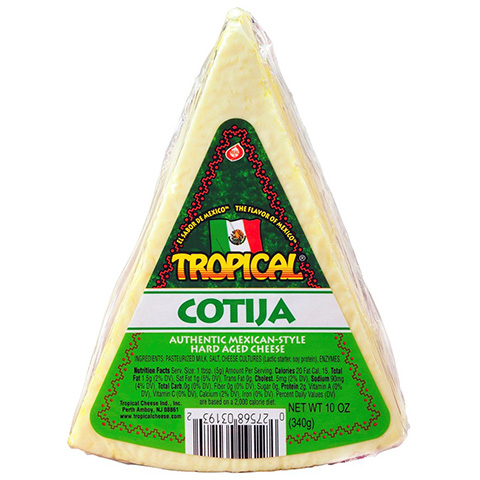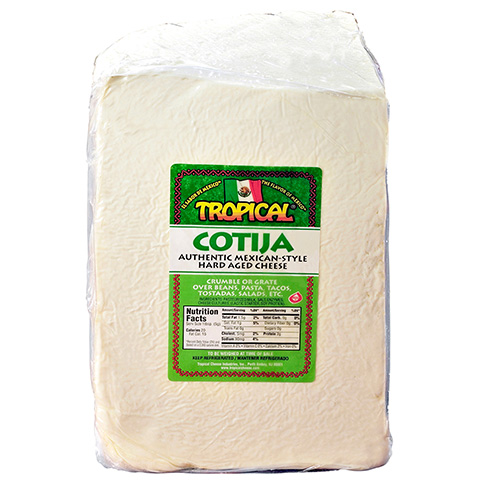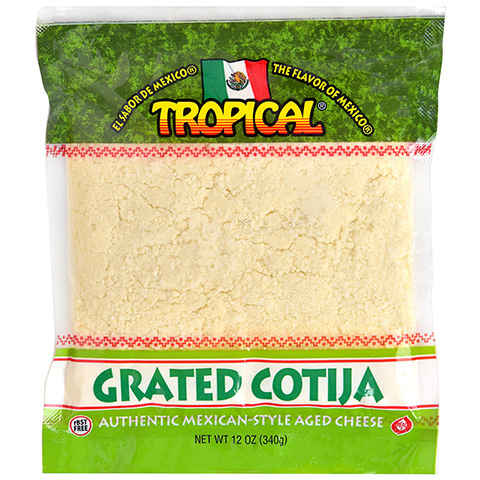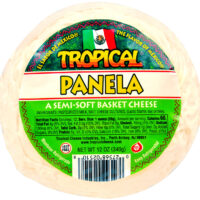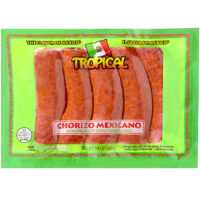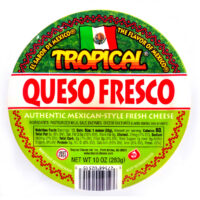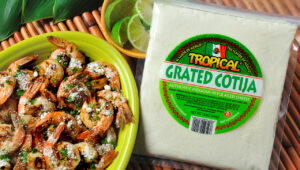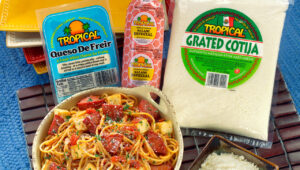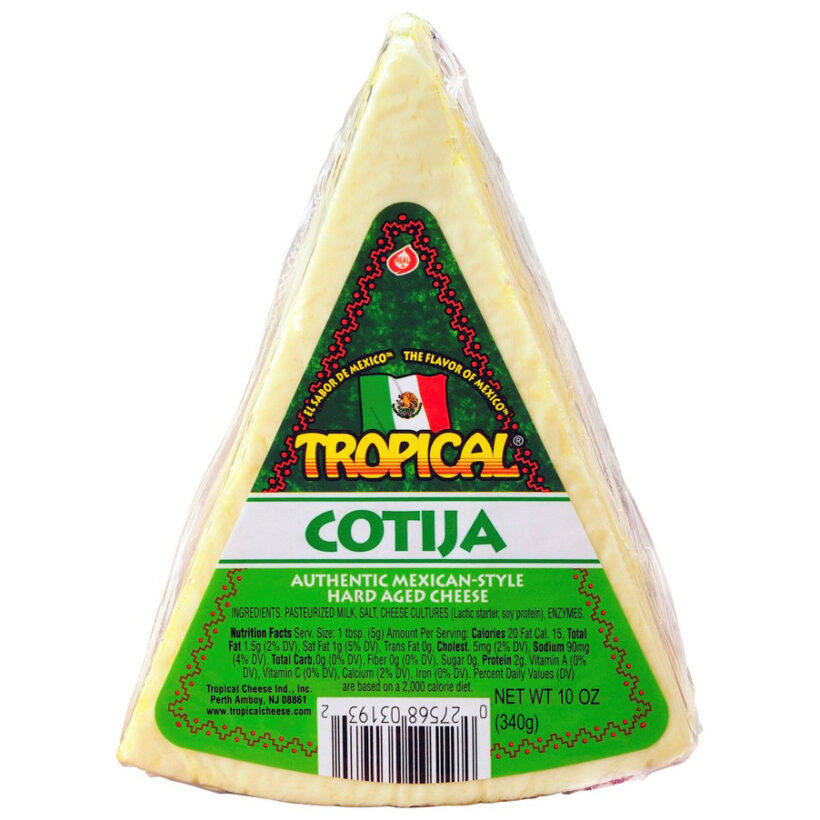Cotija bears the name of the little village in Mexico where it originated. Tropical Cotija is a sharp, aged, dry, salty, and crumbly cheese. This flavorful cheese is perfect for grating. It’s commonly used to add a lively flavor and texture to dishes like refried beans, salads, chili, tostadas, enchiladas, tacos, and corn-on-the-cob. It comes in a hard, triangle-shaped 10 oz wedge, a 12 lb wheel, and grated.
Does Cotija Cheese melt?
No, Cotija Cheese doesn’t melt when heated, but it slightly softens. However, it’s commonly used dry and crumbled.
Where is Cotija Cheese from?
Cotija cheese is named after the mountain village where it originated, Cotija de la Paz, in the state of Michoacán in Mexico. Cotija is a staple cheese in the Michoacán and Jalisco region, but is commonly consumed all across the country. Its flavor and versatility have also made it quite popular in the United States in recent years.
Difference between Cotija Cheese, Queso Fresco, Feta, and Parmesan
Cotija Cheese, Queso Fresco, Feta, and Parmesan Cheese may look similar, but we’ll explain the difference between them here.
The main difference between Cotija Cheese and Queso Fresco is that Cotija is aged, dry and salty, while Queso Fresco, as its name says, is fresh, white, moist, and less salty than Cotija. On the other hand, Feta Cheese is more humid and saltier than Queso Fresco but without the aging of Cotija.
Although Cotija Cheese is closer to Parmesan Cheese, Cotija is generally less aged, crumbles easily, and does not melt, although some have called Cotija the “Mexican parmesan.”
It isn’t easy to replace Cotija Cheese because its flavor and texture are very particular, and it naturally complements Mexican food. Once you try it, you’ll want to put it on everything!
How is Cotija Cheese used?
Cotija Cheese is used grated or crumbled to add a unique, more intense, and salty flavor to dishes such as tacos, tostadas, enchiladas, refried beans, uchepos (traditional corn tamales from the state of Michoacán), and corn-on-the-cob. It’s also used to season some stews. And it can even be used over pasta with more Latin ingredients. Use it in traditional recipes and try it in new ones!
